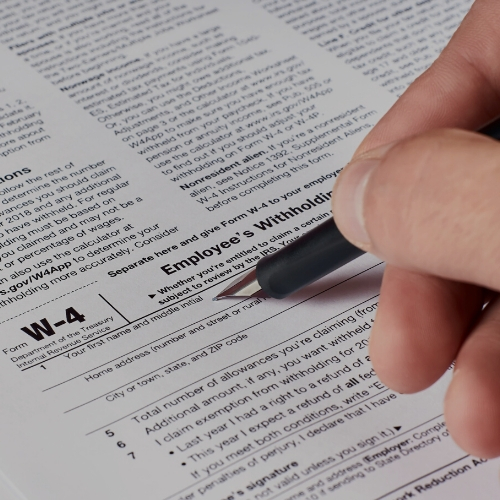Every year’s tax return provides valuable lessons on the optimal amount that taxpayers should have withheld from their paychecks. Heeding these lessons is especially important if you end up owing a substantial amount of money.
Of course, even if you get a nice tax refund, that shouldn’t necessarily be your goal. It essentially means you’re giving the government an interest-free loan. Here’s a primer on why and how to review your withholding and change it, if necessary.
The TCJA’s Impact
Following the passage of the Tax Cuts and Jobs Act (TCJA), the IRS updated the withholding tables that indicate how much employers should hold back from their employees’ paychecks. In general, the amount withheld was reduced. This was done to reflect changes under the TCJA—including the increase in the standard deduction, suspension of personal exemptions and changes in tax rates.
The new tables provided a reasonable amount of tax withholding for some individuals, but they caused other taxpayers to not have enough money withheld to pay their ultimate tax liabilities. Although many people have since adjusted to the TCJA’s impact, the IRS urges taxpayers to review their tax situations annually and adjust their withholding as appropriate.
The agency provides a withholding calculator to assist you. The calculator reflects tax law changes in areas such as available itemized deductions, the increased child credit, the dependent credit and the repeal of dependent exemptions. You can access the IRS calculator.
Circumstances That Trigger Change
There are a variety of specific circumstances that should trigger you to check your withholding. For example, if you adjusted your withholding in 2019—especially in the middle or later part of the year—give it another look. Also, as mentioned, if you got hit by a bigger tax bill than you expected, or received a sizable refund, you may want to make an adjustment.
Certain life changes typically warrant adjusting withholding as well. These include getting married or divorced, having a child or adopting one, buying a home, or incurring notable changes in income.
You can modify your withholding at any time during the year, or even multiple times within a year. To do so, simply submit a new Form W-4 to your employer. Changes typically go into effect several weeks after a new Form W-4 is submitted. (For estimated tax payments, you can make adjustments each time quarterly estimated payments are due. The next payment is due on Monday, June 15, 2020.)
We Can Help
Contact us to discuss your situation and what you can do to remedy any shortfalls to minimize taxes due, as well as any penalties and interest. We can help you sort out whether to adjust your withholding.





